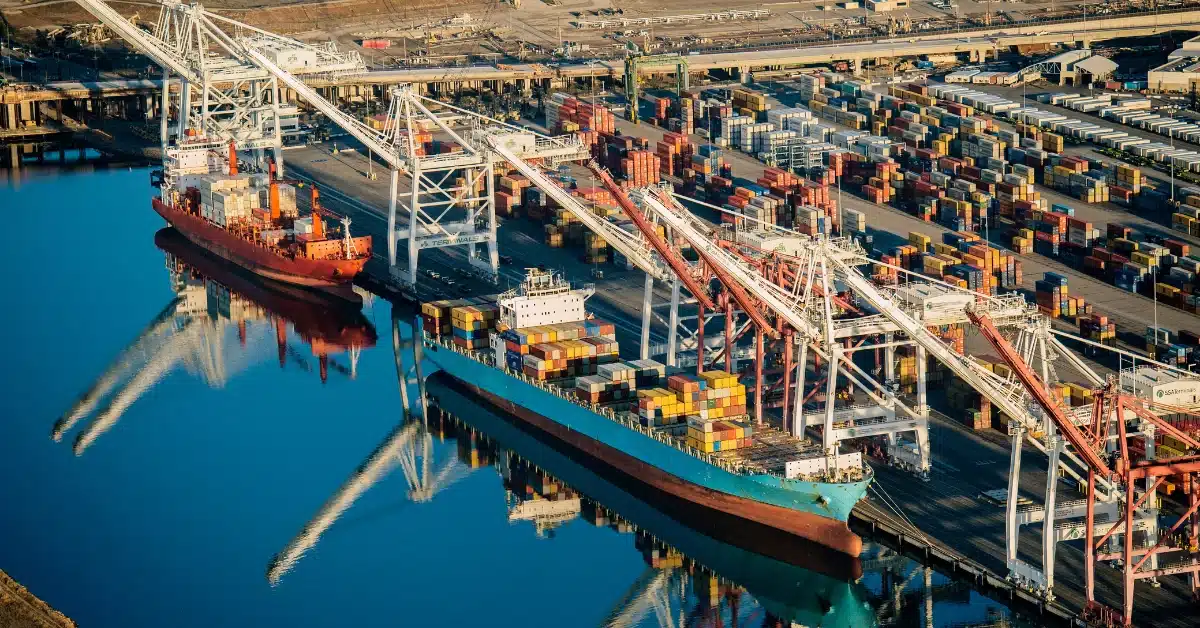Navigating the Shifting Currents: Container Shipping Faces Potential ‘Carnage’ Amid Market Realignments
Table of Contents
The global container shipping industry is navigating turbulent waters in 2025. Analysts are raising alarms over unprecedented shifts in shipping capacities, escalating freight rates, and evolving trade routes. These dynamics are reshaping the maritime landscape, with potential implications for global supply chains and economic stability.
Record-Breaking Capacities and Rising Rates
Recent data indicates a surge in container shipping capacity from the Far East to North Europe, reaching levels not seen since the pandemic’s peak in November 2021. This increase coincides with a 4.8% rise in average spot rates on this route, now at $2,457 per forty-foot equivalent unit (FEU). The Mediterranean route has experienced an even steeper climb, with rates jumping 6.8% to $3,270 per FEU. Such simultaneous increases in capacity and rates during a traditionally slower period suggest underlying market tensions and shifting demand patterns.
Trade Route Realignments Amid Tariff Pressures
The escalation of tariffs, particularly the U.S. imposing up to 245% on certain Chinese imports, is prompting shippers to redirect cargo flows. Europe is emerging as an alternative destination, absorbing volumes initially intended for the U.S. market. This redirection is contributing to the increased capacity and rates observed on Far East to Europe routes. Conversely, rates on routes from the Far East to the U.S. East and West Coasts have remained steady, indicating a potential shift in global trade dynamics.
Port Congestion and Operational Challenges
European ports are grappling with congestion due to the influx of redirected shipments. Major hubs like Antwerp, Le Havre, London Gateway, and Hamburg are experiencing delays attributed to factors such as adverse weather, equipment maintenance, and labor disputes. The average transit time from the Far East to North Europe stands at 55 days, and the anticipated arrival of record capacities could exacerbate existing bottlenecks, leading to widespread disruptions in supply chains.
Industry Responses and Strategic Adjustments
Shipping companies are responding to these challenges by implementing general rate increases and surcharges to stabilize prices. However, the effectiveness of these measures is uncertain amid fluctuating demand and overcapacity concerns. Additionally, the industry is witnessing a shift towards smaller, more flexible vessels to adapt to changing trade patterns and environmental regulations. This transition aims to enhance operational agility and mitigate the risks associated with deploying ultra-large container ships in volatile markets.
Future Outlook and Considerations
The container shipping sector faces a complex landscape characterized by geopolitical tensions, economic uncertainties, and evolving regulatory frameworks. The potential for further disruptions looms, with factors such as ongoing trade disputes, environmental challenges, and labor negotiations influencing the industry’s trajectory. Stakeholders must remain vigilant and adaptable, employing strategic planning and risk management to navigate the uncertainties ahead.
FAQs for Container Shipping Market Realignment
Why are container shipping rates increasing despite record capacity levels?
This addresses the apparent contradiction between rising supply and rising costs—ideal for clarifying market dynamics.
How are global trade routes being affected by U.S. and China tariff policies?
Highlights the geopolitical influence on cargo flows, especially the shift from U.S.-bound to Europe-bound shipments.
Which European ports are experiencing the most congestion, and why?
Addresses operational delays and port performance—important for shippers planning routes.
What risks do shippers face if they continue using ultra-large container vessels in this market?
Gives insight into why fleet flexibility is becoming a priority and the dangers of overcapacity.
What can logistics managers do to prepare for further container market disruptions?
Offers strategic takeaways and encourages proactive planning for your business audience.





